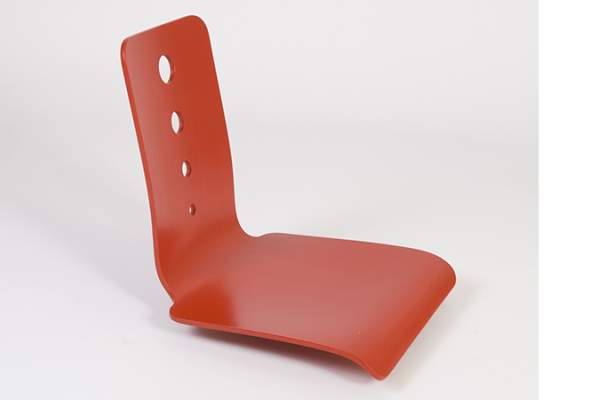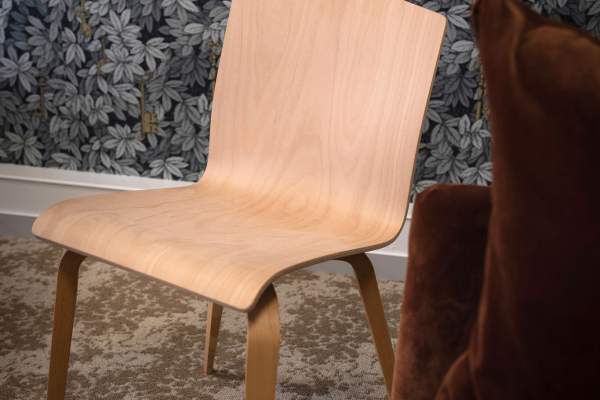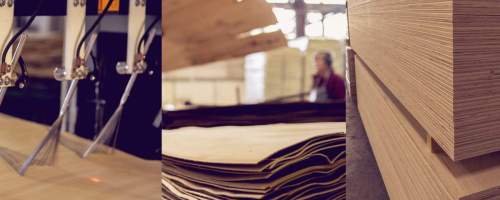Peeling, pressing, machining, sanding
To guarantee the quality and strength of our products, we follow our essential manufacturing steps with the greatest care.1) Peeling
The wood veneer is obtained by peeling the wood from a trunk (beech, oak, poplar or mahogany) to obtain a real wood sheet. This is then cut to the desired dimensions. Wood veneering therefore retains all the qualities of wood, but makes it easier to handle and cut. These wood sheets can then be made available with various qualities and coatings, offering a wide choice of colours and patterns.
2) Pressing
Pressing uses deformation to compensate for the variations in thickness inherent in the various machining operations. It therefore promotes heat conduction through good contact. With 60 presses and more than 300 forms available, production is varied with multiple creation possibilities. We can provide all kinds of forms and satisfy all types of requests. We produce more than 2 million pieces from veneer sheets. This high-performance equipment enables us to be very responsive and to undertake the most ambitious projects.3) Machining
After pressing, the pressed piece, which is still rough, moves to machining. Using state-of-the-art equipment (4- or 5-axis CNC machines) together with powerful, versatile tools, it is then cut or decorated in line with the order.4) Sanding
To ensure good adhesion of the varnish or various colours, the created object is sanded effectively using various grades. This prevents the varnish being absorbed by the wood and guarantees a good bond.We have a range of standard colours. We also offer various varnish glosses (from 0 to 45 gloss, matt, shine, satin) and fire-resistant varnish (M1 varnish).
On the same topic:




